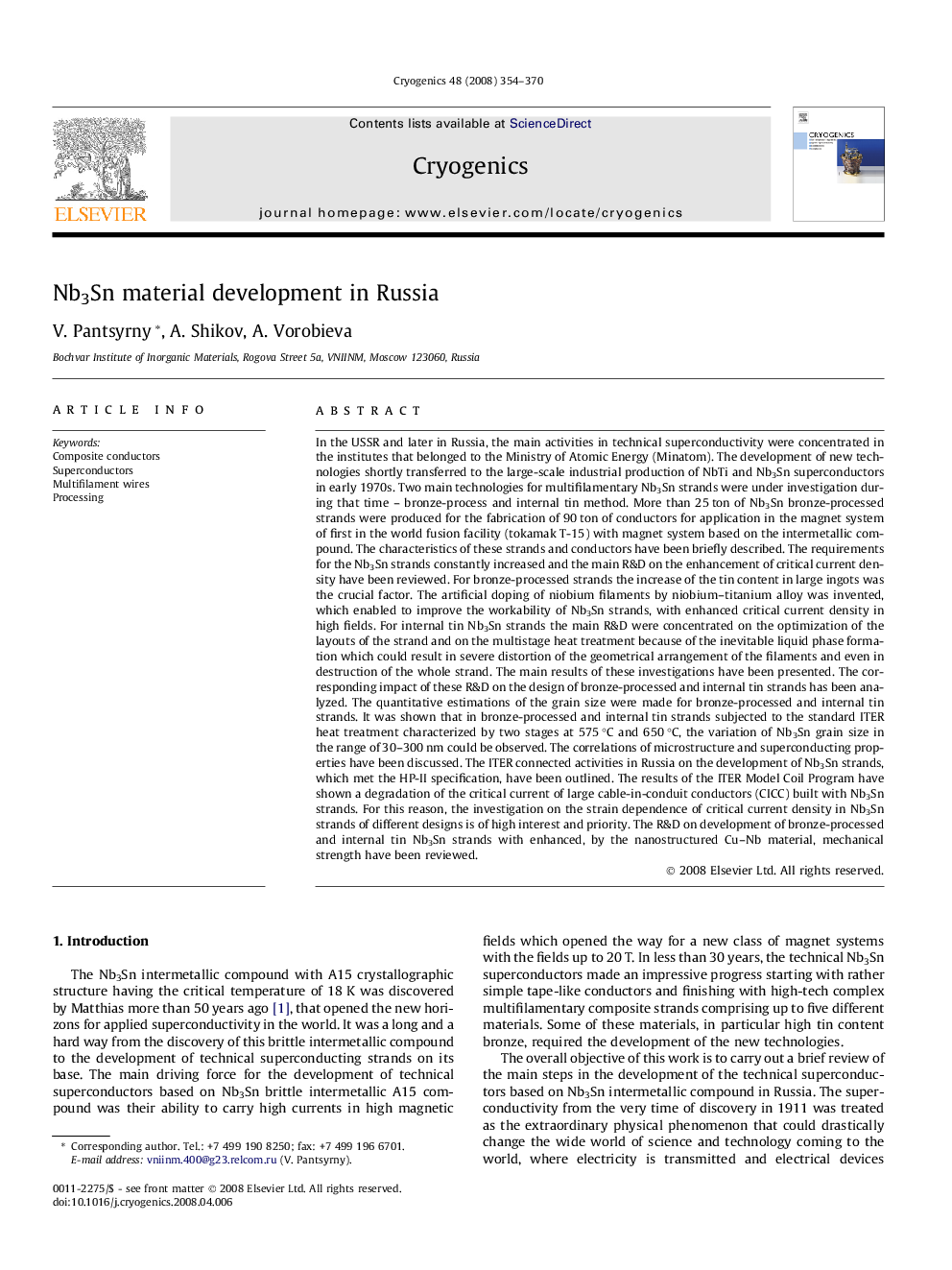| کد مقاله | کد نشریه | سال انتشار | مقاله انگلیسی | نسخه تمام متن |
|---|---|---|---|---|
| 1508214 | 1511068 | 2008 | 17 صفحه PDF | دانلود رایگان |

In the USSR and later in Russia, the main activities in technical superconductivity were concentrated in the institutes that belonged to the Ministry of Atomic Energy (Minatom). The development of new technologies shortly transferred to the large-scale industrial production of NbTi and Nb3Sn superconductors in early 1970s. Two main technologies for multifilamentary Nb3Sn strands were under investigation during that time – bronze-process and internal tin method. More than 25 ton of Nb3Sn bronze-processed strands were produced for the fabrication of 90 ton of conductors for application in the magnet system of first in the world fusion facility (tokamak T-15) with magnet system based on the intermetallic compound. The characteristics of these strands and conductors have been briefly described. The requirements for the Nb3Sn strands constantly increased and the main R&D on the enhancement of critical current density have been reviewed. For bronze-processed strands the increase of the tin content in large ingots was the crucial factor. The artificial doping of niobium filaments by niobium–titanium alloy was invented, which enabled to improve the workability of Nb3Sn strands, with enhanced critical current density in high fields. For internal tin Nb3Sn strands the main R&D were concentrated on the optimization of the layouts of the strand and on the multistage heat treatment because of the inevitable liquid phase formation which could result in severe distortion of the geometrical arrangement of the filaments and even in destruction of the whole strand. The main results of these investigations have been presented. The corresponding impact of these R&D on the design of bronze-processed and internal tin strands has been analyzed. The quantitative estimations of the grain size were made for bronze-processed and internal tin strands. It was shown that in bronze-processed and internal tin strands subjected to the standard ITER heat treatment characterized by two stages at 575 °C and 650 °C, the variation of Nb3Sn grain size in the range of 30–300 nm could be observed. The correlations of microstructure and superconducting properties have been discussed. The ITER connected activities in Russia on the development of Nb3Sn strands, which met the HP-II specification, have been outlined. The results of the ITER Model Coil Program have shown a degradation of the critical current of large cable-in-conduit conductors (CICC) built with Nb3Sn strands. For this reason, the investigation on the strain dependence of critical current density in Nb3Sn strands of different designs is of high interest and priority. The R&D on development of bronze-processed and internal tin Nb3Sn strands with enhanced, by the nanostructured Cu–Nb material, mechanical strength have been reviewed.
Journal: Cryogenics - Volume 48, Issues 7–8, July–August 2008, Pages 354–370